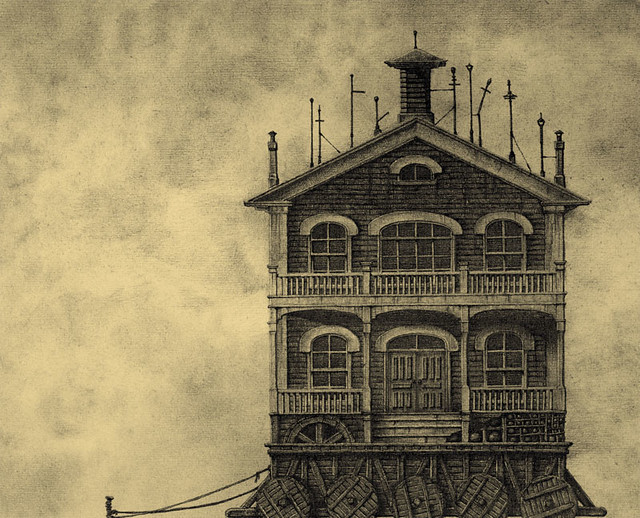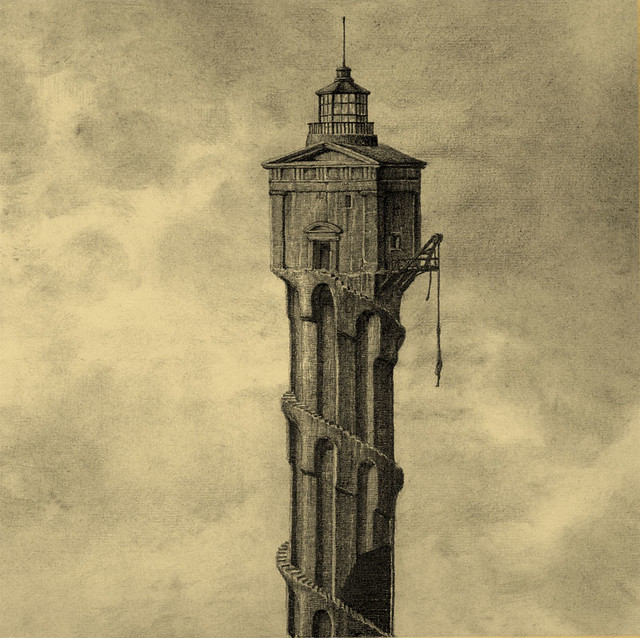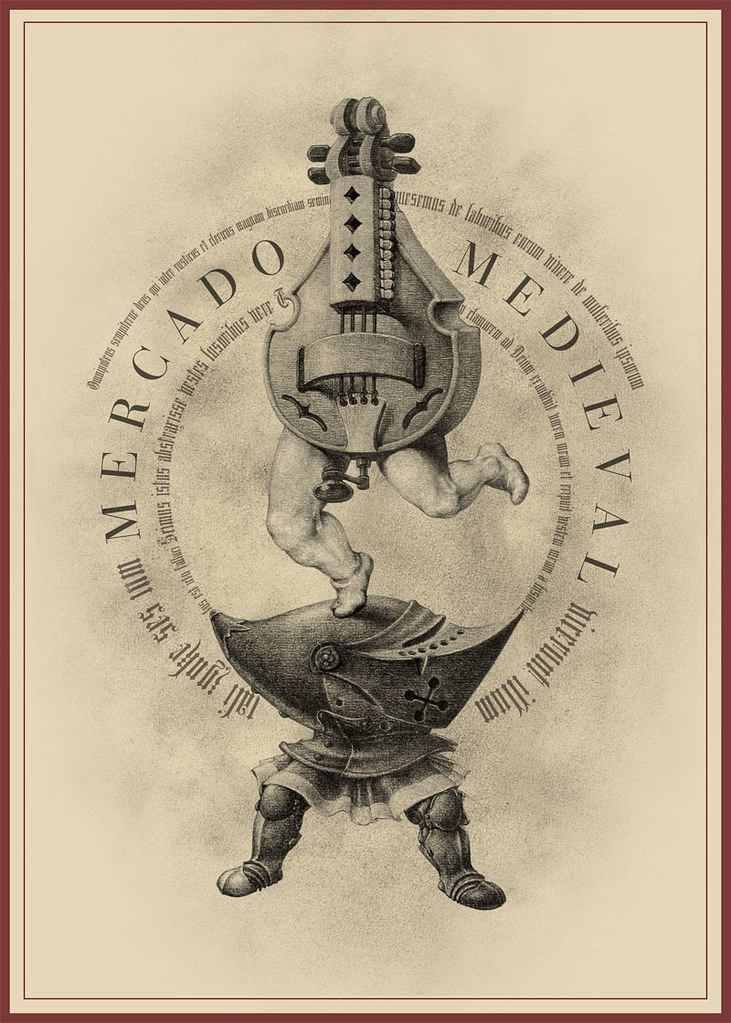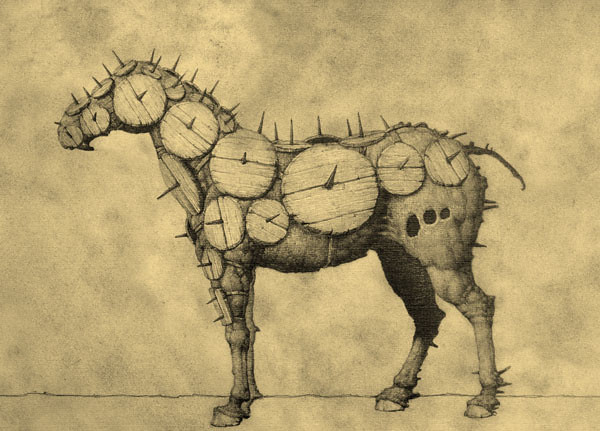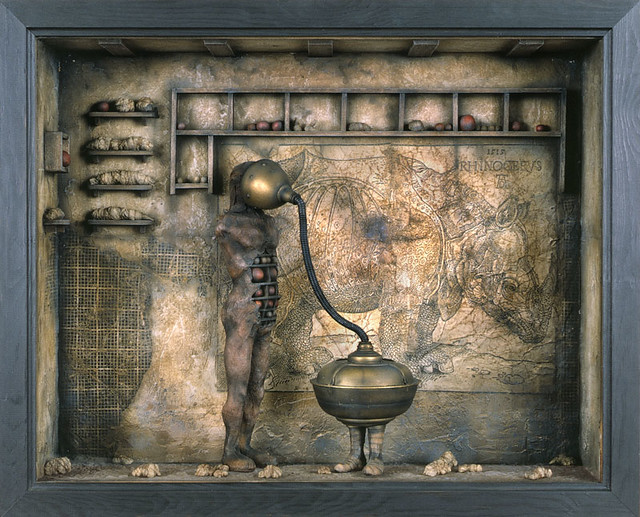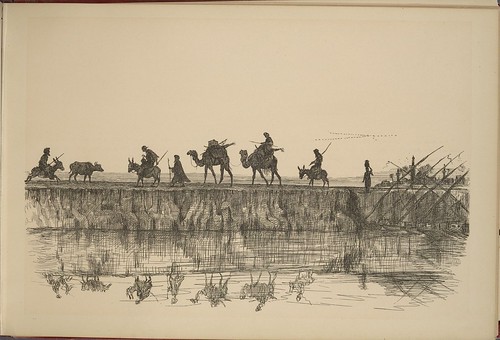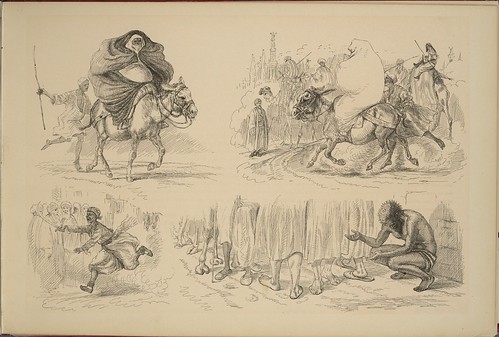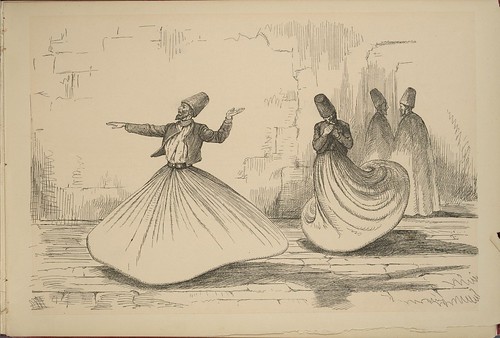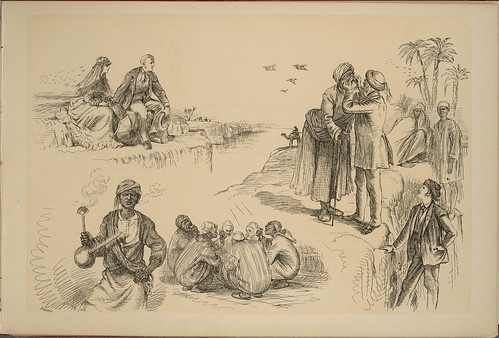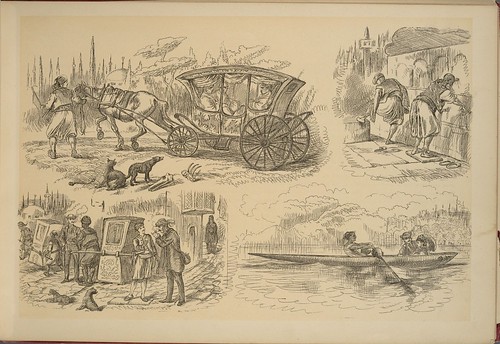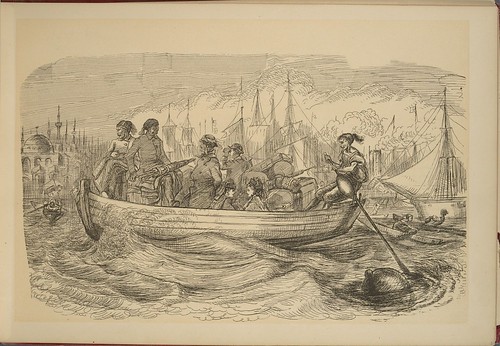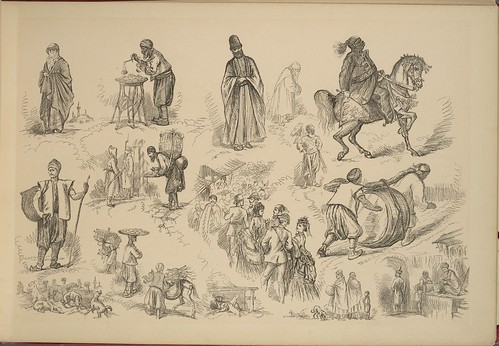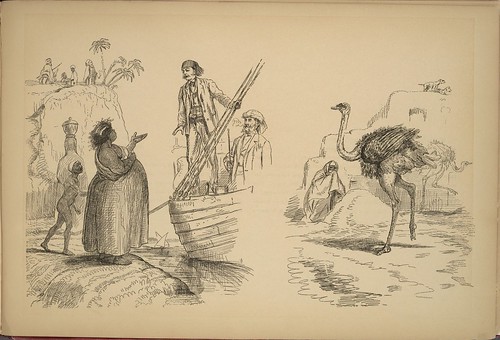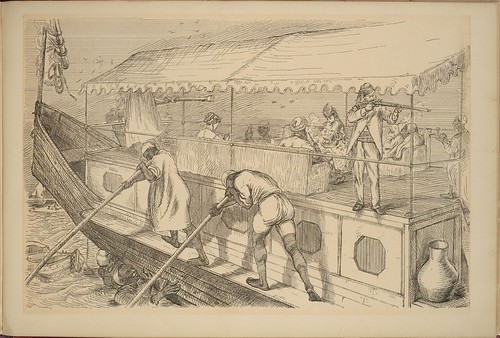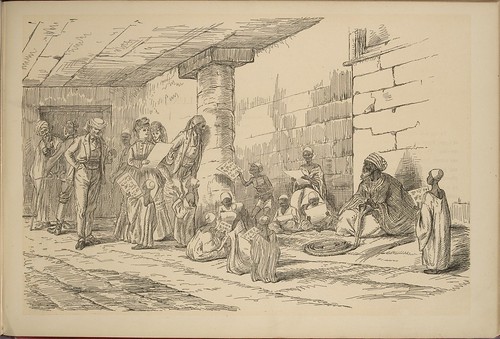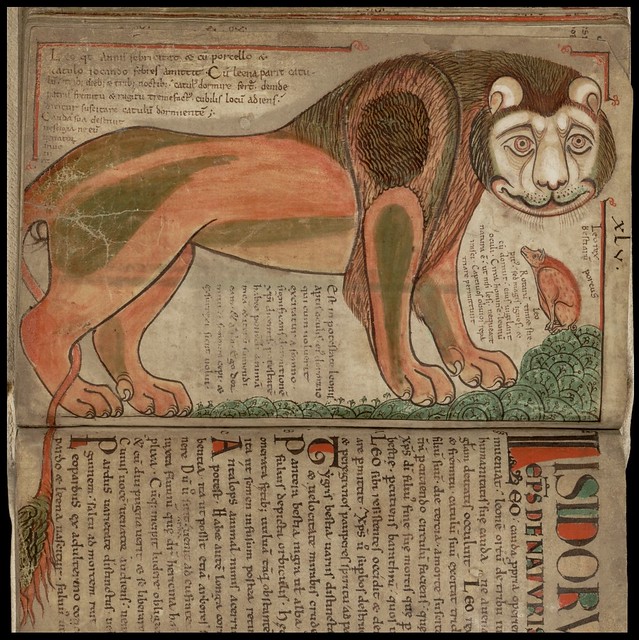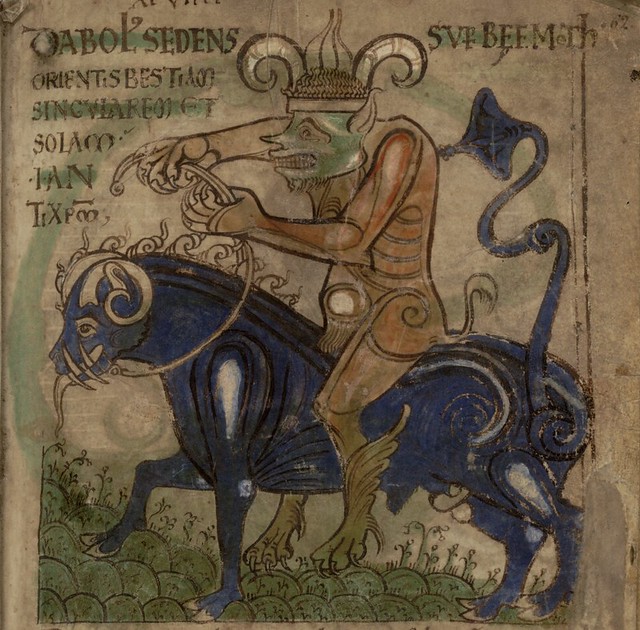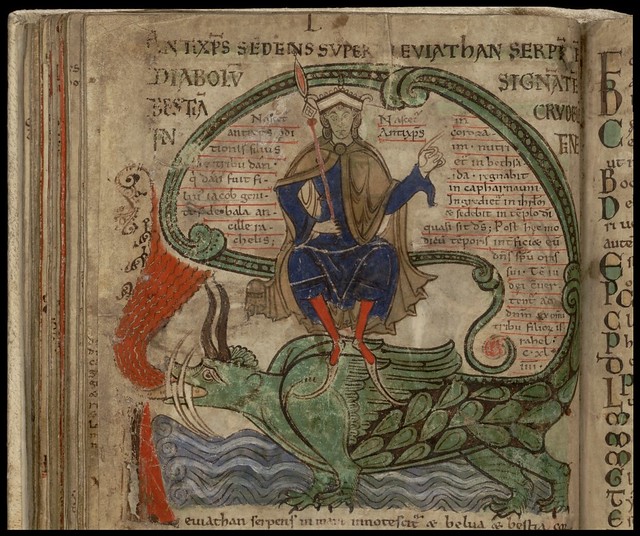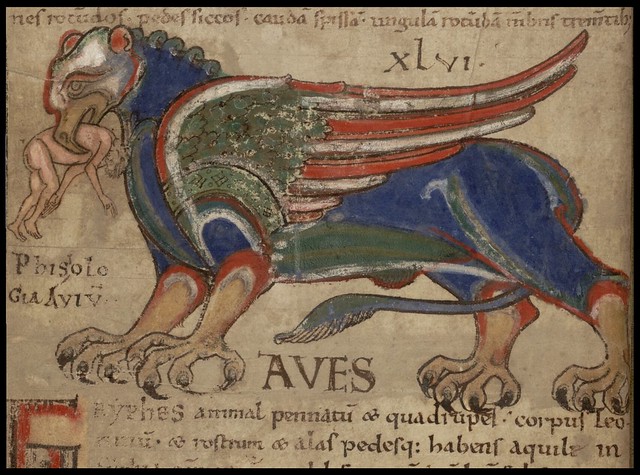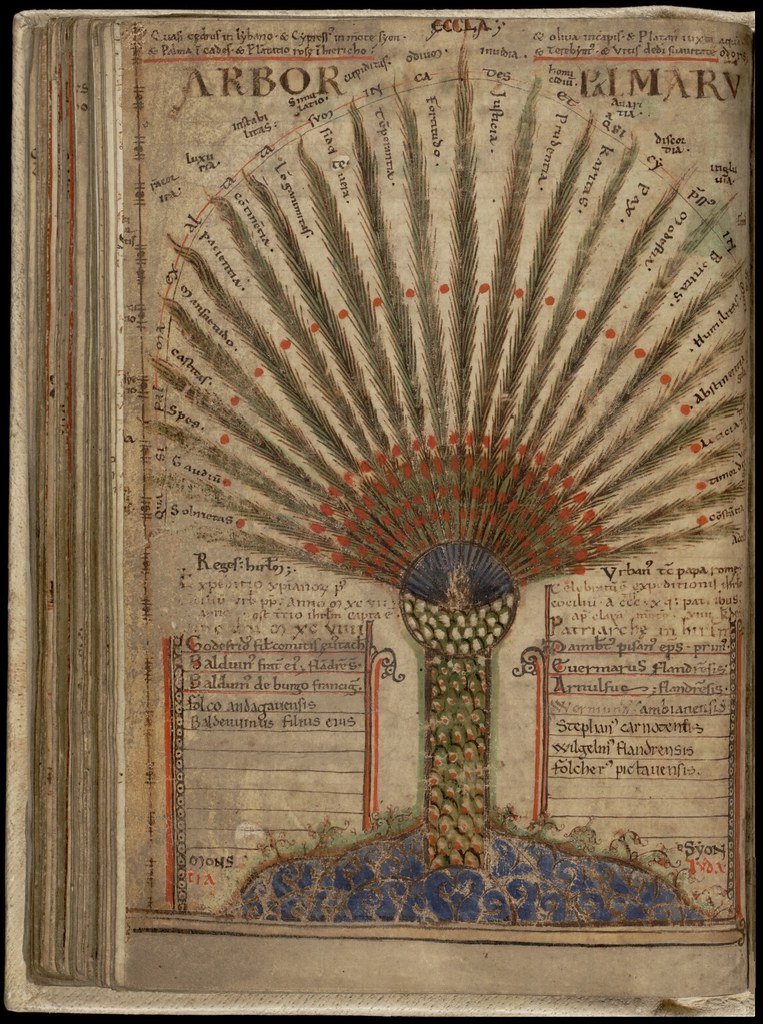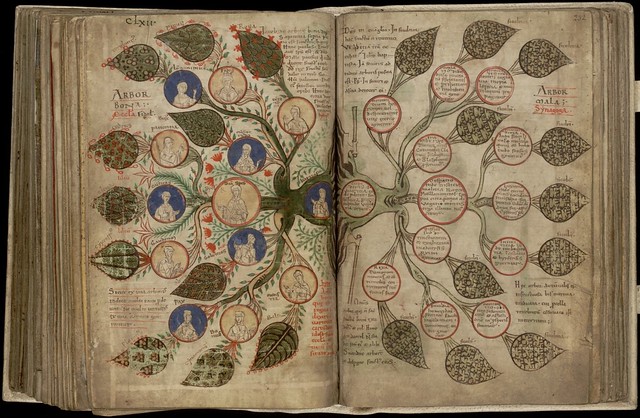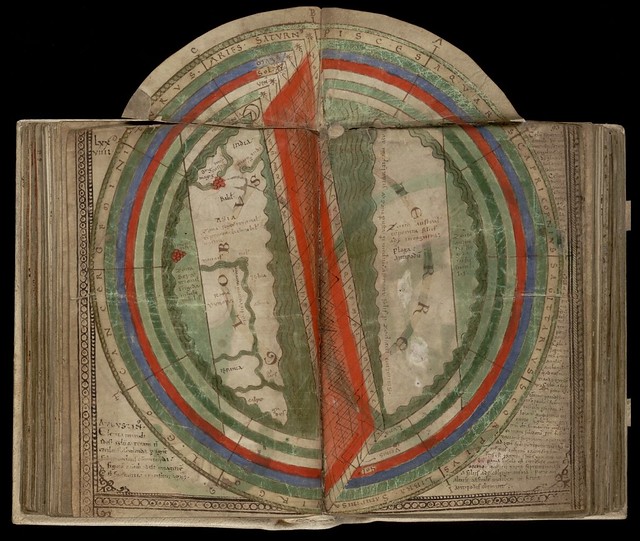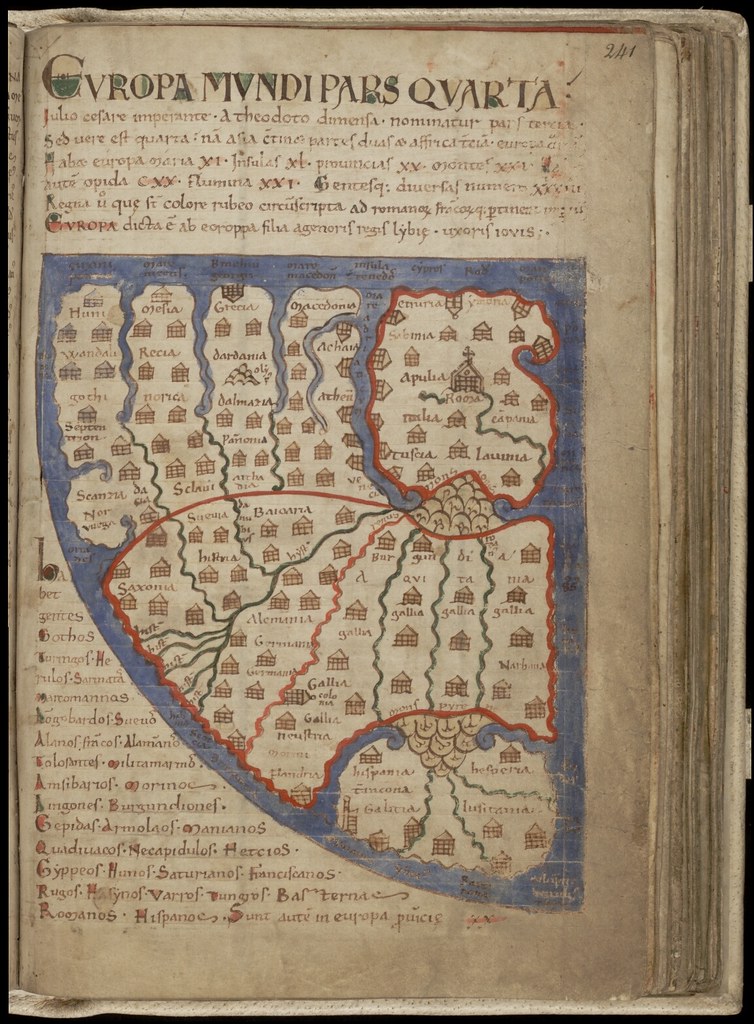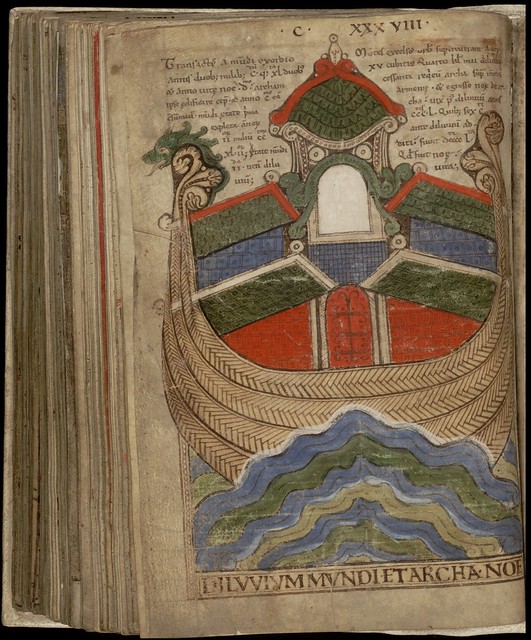- image captions below are translated/edited. A bit.

Chariot of grotesques and scrollwork drawn by two fantasy animals and pushed by a satyr, whose head is trapped in a large shell. A satyr is in the car with a lighted lamp. [I]n print series of eight chariots of grotesques and scrollwork with satyrs, animals and various other creatures; decorated with trophies, garlands and vines. [1550]
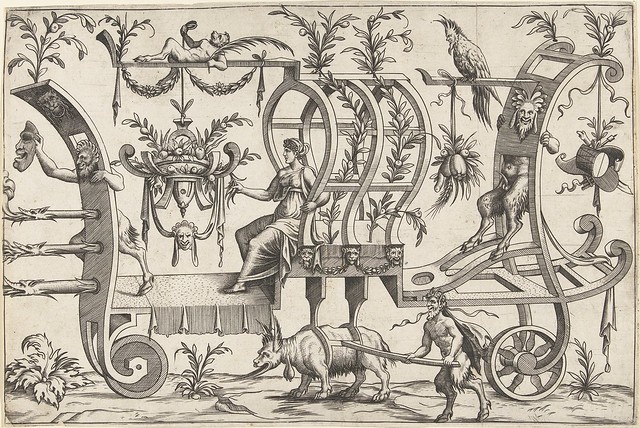
Chariot of grotesques and scrollwork (series title).
Chariot pulled by a fantasy beast (?like a goat) -- the chariot has a seated woman and four satyrs, one of the satyrs on the front of the car is holding a mask in his hand, without a name. [1550]

Frieze with chariots of grotesques and roll and fittings work with figures and animals, decorated with garlands and vines (series title)
Car containing a woman, pushed by a man and pulled by a man riding on the back of a bear. A man with a lance sits in the front. Behind the back of the woman is a monkey. Belongs to series of 4 prints. [1552]

Frieze with chariots of grotesques and roll and fittings work with figures and animals, decorated with garlands and vines (series title) [1552]
The car is pulled by two men and a goat, which runs between them. Belongs to series of 4 prints.

Chariot of grotesques and scrollwork (series title)
The car is propelled by three satyrs with saucer-shaped chins. [From a] series of eight chariots of grotesques and scrollwork with satyrs, animals and various other creatures, decorated with trophies, garlands and vines. [1550]

The structure rests on a turtle. [From a] series of eight chariots of grotesques and scrollwork with satyrs, animals and various other creatures, decorated with trophies, garlands and vines. [1550]

A man and woman are seated in a car pulled by a satyr and pushed by two men, all caught in the frame. [From a] series of eight chariots of grotesques and scrollwork with satyrs, animals and various other creatures, decorated with trophies, garlands and vines.
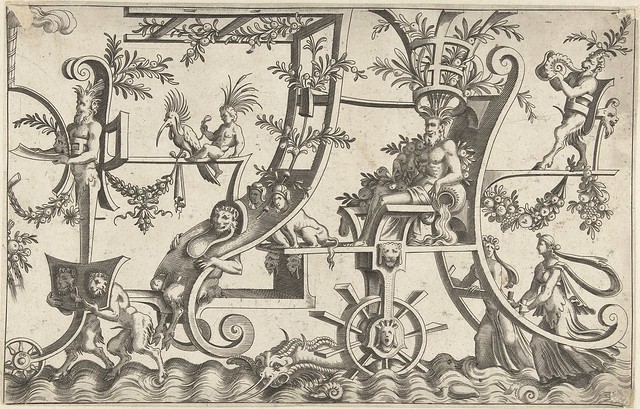
The vehicle is moved through the water by a paddle wheel. Two satyrs pull, two women push. [From a] series of eight chariots of grotesques and scrollwork with satyrs, animals and various other creatures, decorated with trophies, garlands and vines.

The woman sits in a loop of scrollwork in a cart pushed by 2 men. A woman riding on a deer leads the way. [1550]

Frieze with chariots of grotesques and roll and fittings work with figures and animals, decorated with garlands and vines (series title)
Behind the turtle is a woman with a stick. Another woman holds a dog's ears in front of her. The car is pushed by a dog and two men. Belongs to series of 4 prints. [1552]
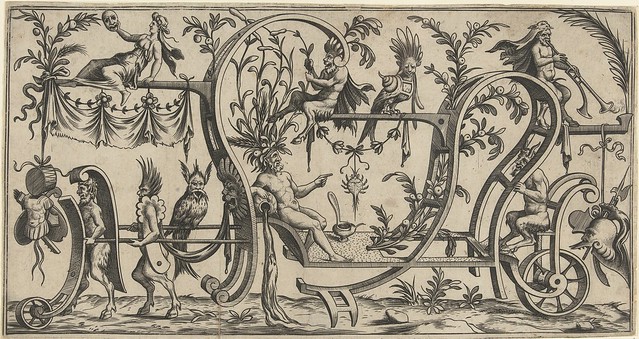
The front satyr runs between two plates. [From a] series of eight chariots of grotesques and scrollwork with satyrs, animals and various other creatures, decorated with trofeeëen, garlands and vines.
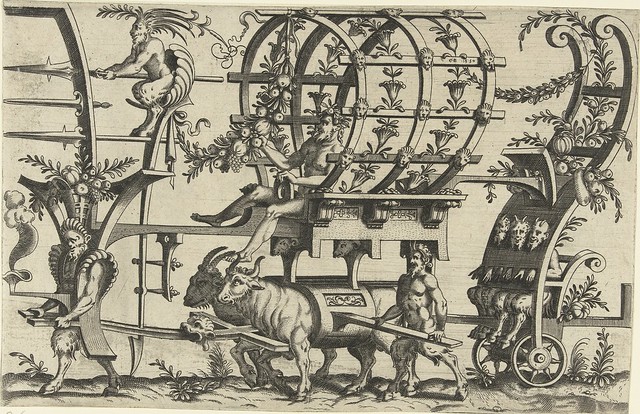
Three satyrs with heads and hands locked in the rear bogie. A male sits under a trellis in the vehicle. The chariot is pulled by 2 bulls and a satyr. [From a] series of eight chariots of grotesques and scrollwork with satyrs, animals and various other creatures, decorated with trophies, garlands and vines. [1550]
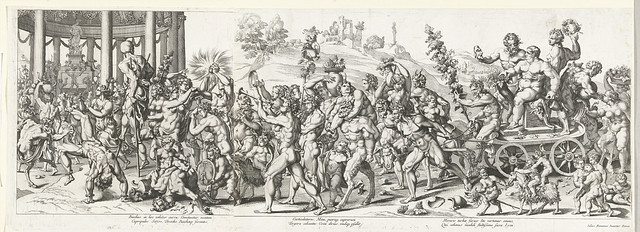
2-part picture. A procession in honor of the god Bacchus who sits in a chariot. And a procession to the temple with his satyrs and putti and others elated with feasting and dancing. Some play on flutes and tambourines, others carrying sticks or jars with grapes and vines with them.
In the absence of a handy academic storyline to explain the hallucinogenic excesses of **mannerist** ornament, I'm choosing to believe that this array of 'transport' is the mid-16th century equivalent of a bloated movie franchise: the one sequel too many inadvertently became a parody of itself.
These designs are essentially riffing on a seminal technological, artistic and mythological motif from throughout recorded history: the chariot, which was first developed in the Middle East in about 2000 to 3000 BC.
"The chariot, driven by a charioteer, was used for ancient warfare during the bronze and the iron ages. Armor was limited to a shield. The vehicle was used for travel and in processions, games, and races after it had been superseded by other vehicles for military purposes." [W]
"One of the culminating battles of chariotry came early in the 13th century B.C., when armies of the Hittites and Egyptians clashed on the plains of northern Syria at Kadesh. Muwatallis II, the Hittite king, deployed a force of 3,500 chariots, and Ramses II is supposed to have countered in kind, but the battle seems to have ended in a stalemate. By the end of that century, as armies learned to blunt the attacks with swarming infantry and later cavalry, the age of the chariot as a weapon drew to a close. The high-speed vehicle was reduced to roles in sport and regal parades." [source]
For the sake of brevity we fast forward to Roman times when the ceremony of the Roman Triumph (sanctification of military honour) involved parading of the celebrated hero through the city streets on a chariot. This would seem to be the true origin for the establishment of the chariot as an important iconographic symbol for elevating/feting/honouring/celebrating either man or God in drama and art (mythological in particular : see the final image, pertaining to Bacchus, above).
The chariot, as a symbolic cultural element, followed various paths down through history, from the pageantry and Joyous Entries associated with the festivals of the 16th/17th centuries to parodies in Fractured Fairytale cartoons in the 1960s, by way of polar examples.
My personal view - apply skepticism as necessary - is that the designs above by Cornelis Bos are much less concerned with adding to the visual language of pageantry (or even ornament) than they are with satirising the Renaissance festival culture itself. Ornament that once adorned the embellished chariots and floats of the festival scene has come alive here not as secondary decoration but as the primary focus. The abstracted grotesque figures and mythological details propel our 'taxis' - the almost irrelevant, bizarre land and water transport frames - forward.
Doubtless, art historians would observe these ornamental fantasies and line up to expand on the projected meanings from analysis of allegorical features and symbology. They are welcome to it. I prefer to see the simple, humorous mockery of artistic forebears by the emerging talents of a new movement. Mannerist Fractured Fairytales, if you will.
- All of the Cornelis Bos designed fantasy-ornament prints are to be found online (among a wide range of his material) at the Rijksmuseum in Holland.
- Remaking the Wheel: Evolution of the Chariot 1994.
- British Library - Renaissance Festival Books.
- Wikipedia: Cornelis Bos :: Chariot :: Mannerism :: Roman Triumph :: Triumphal Arch.
- Other luminary figures from the Dutch/Belgian print scene involved - variously - in producing these suites of ornamental illustrations include Hieronymus Cock, Maarten van Heemskerk and Cornelis Floris (at least).
- I am greatly indebted to Will C from San Diego, who kindly pointed out these industrial-grade hallucinations earlier in the year. Thanks mate! A fitting end to the year.

